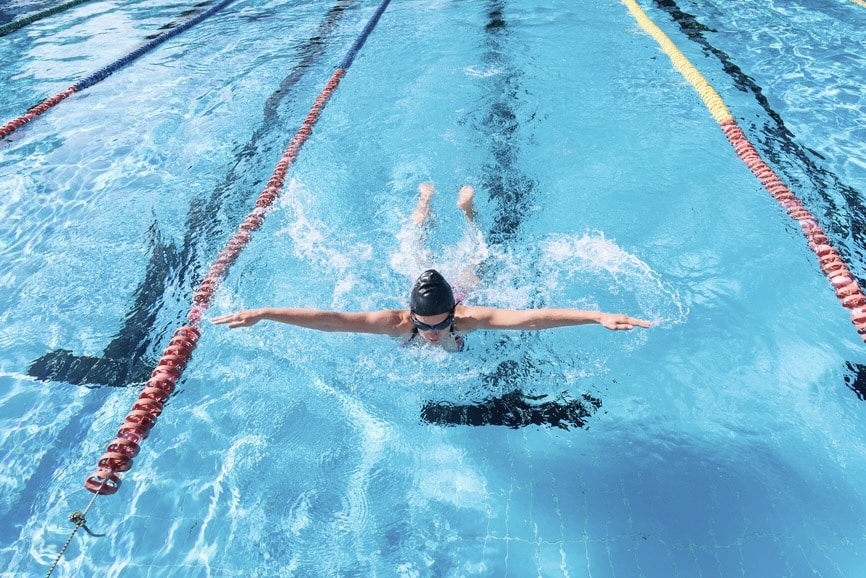Researchers have a message for people with chronic conditions who find land-based training too difficult.
Get in the water.
Published in the journal BMJ Open Sport & Exercise Medicine, the study states that high-intensity interval training in water, often called aquatic HIIT (AHIIT) improves exercise capacity in adults with chronic conditions such as diabetes and arthritis.
The researchers also say that AHIIT has a similar impact as land-based training (LBHIIT) and may be a safe and valuable alternative for people with chronic conditions who are unable to perform LBHIIT.
Dr. Mark Slabaugh, a sports medicine specialist at Mercy Medical Center in Baltimore, said the benefits of water exercise is clear for people suffering from conditions such as tendinitis, arthritis, and chronic pain.
“This study gives us as clinicians even more options for patients who are interested in cross-training and doing HIIT workouts but can not due to joint pain,” said Salbaugh, who was not involved in the study. “I counsel my patients to start out with these light AHIIT sessions and gradually work up to a longer duration of swimming, which has been proven to be a sport which can be done well into your later years.”
HIIT is an interval training exercise involving brief bursts of high intensity movements followed by short recovery periods with lower intensity movements.
It’s considered to have more health benefits than moderate-intensity exercise for people with and without chronic conditions. It’s an attractive exercise option because it increases aerobic capacity and endurance while being time efficient.
On the other hand, researchers say that exercising in water can help relieve pressure on joints, allowing people to complete movements they can’t necessarily do on land.
There is, however, conflicting evidence on AHIIT’s physiological benefits.
“A key finding of this meta-analysis indicates that AHIIT may be as beneficial as LBHIIT, which gives people with chronic conditions another choice for effective HIIT or potentially a more successful environment to start and continue with high-intensity training,” the researchers said in a statement.
They added that the natural support and buoyancy of water “may facilitate this effectiveness.”
Sidney Corbin is a physical therapist and clinic director at SporTherapy in Texas, where they use a pool for therapy.
Corbin, who was not involved in the study, stated that water-based therapy offloads joints while giving people increased resistance with which to help with conditions such as osteoarthritis, balance deficits, sensory processing disorders, and generalized weakness/deconditioning as well as with post-operative patients.
“The pool is a great opportunity to provide sensory feedback while also providing resistance, which is a unique property that is difficult to replicate on land,” Corbin said. “An aquatic environment can be a great way to reach a patient population that is otherwise sedentary or inactive.”
Corbin said people with osteoarthritis, chronic low back pain, or other chronic conditions may be limited in their tolerance to LBHIIT and not be able to fully participate and enjoy the benefits HIIT has to offer.
“We can be more inclusive to those populations and decrease further health risks to those populations by introducing AHIIT,” she said. “The aquatic environment both provides offloading of joints, but also sensory input to their system which may be otherwise sensitized from chronic pain, constant resistance from the water, and if performing in a warmed pool may provide relaxation to otherwise painful muscles and joints.”
Dr. William Ashford, an orthopedic surgeon at AICA Orthopedics in Atlanta who wasn’t involved in the study, said that AHIIT presents a highly effective treatment modality, particularly for people with musculoskeletal conditions such as arthritis and chronic back pain.
Ashford said buoyancy of water provides a natural resistance while minimizing joint stress, allowing people to perform exercises that would be painful or impossible on land.
“Moreover, the cardiovascular benefits of HIIT are well-documented, and translating this to an aquatic environment seems to amplify these benefits for certain populations,” Ashford said.
Ashford said adherence to exercise regimens is a critical factor in chronic disease management.
There are also limitations to water-based exercise.
“While effective for many, it might not suit all patients, especially those with certain types of chronic lung diseases, where the water pressure might pose breathing challenges,” Ashford said. “Also, accessibility to appropriate facilities can be a barrier for some patients.”
That said, Ashford said more research should be done to identify ways to make the water-based therapy more accessible to more people.
“AHIIT stands out as a potent, adaptable, and patient-friendly approach to managing various chronic conditions,” he said. “It combines the benefits of HIIT with the unique properties of water, offering a synergistic effect that can be particularly beneficial for patients struggling with land-based exercises.”
Source: Medical News Today







